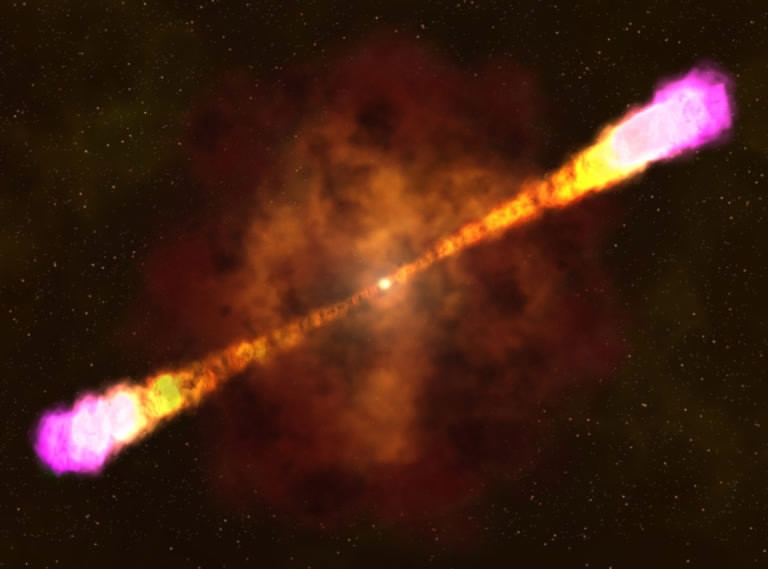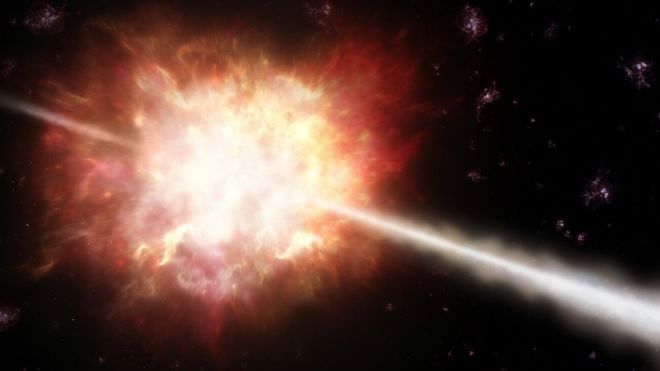An international team of astronomers has successfully observed a gamma-ray burst in unprecedented detail like never before, according to researchers from the University of Maryland.
As one of the most energetic and explosive events in the universe, gamma-ray burst is typically tough to track because it is very short-lived and sometimes even could only last just a few milliseconds.
By using ground- and space-based telescopes, researchers observed the whole process, named GRB 160625B, which revealed many key details about the initial phase of a gamma-ray burst and the evolution of the large jets of matter and energy that formed as a result of the burst.

An artist's illustration of a gamma-ray burst, an energetic blast of jets that fly at nearly the speed of light from a massive star collapsing into a black hole. /NASA Photo
“Gamma-ray bursts are catastrophic events, related to the explosion of massive stars 50 times the size of our Sun. If you ranked all the explosions in the universe based on their power, gamma-ray bursts would be right behind the Big Bang,” said Eleonora Troja, an assistant research scientist in astronomy department at the University of Maryland and lead author of the research. “In a matter of seconds, the process can emit as much energy as a star the size of our Sun would in its entire lifetime. We are very interested to learn how this is possible.”

Arizona State University Photo
Because of these "rare" pictures, researchers could get more details about how a gamma-ray burst evolves as the dying star collapses, and how it eventually becomes a black hole.
Data suggests that the black hole produces a strong magnetic field that dominates the jets of matter and energy. Then, as the magnetic field breaks down, matter takes over and begins to dominate the jets.
In the past, most researchers thought that jets could be dominated only by the magnetic field or matter — not both. The current results represent that both factors are the "key roles".

NASA Photo
At the same time, researchers also found that synchrotron radiation is the key, which powers the initial, extremely bright phase of the burst, known as the “prompt” phase.









